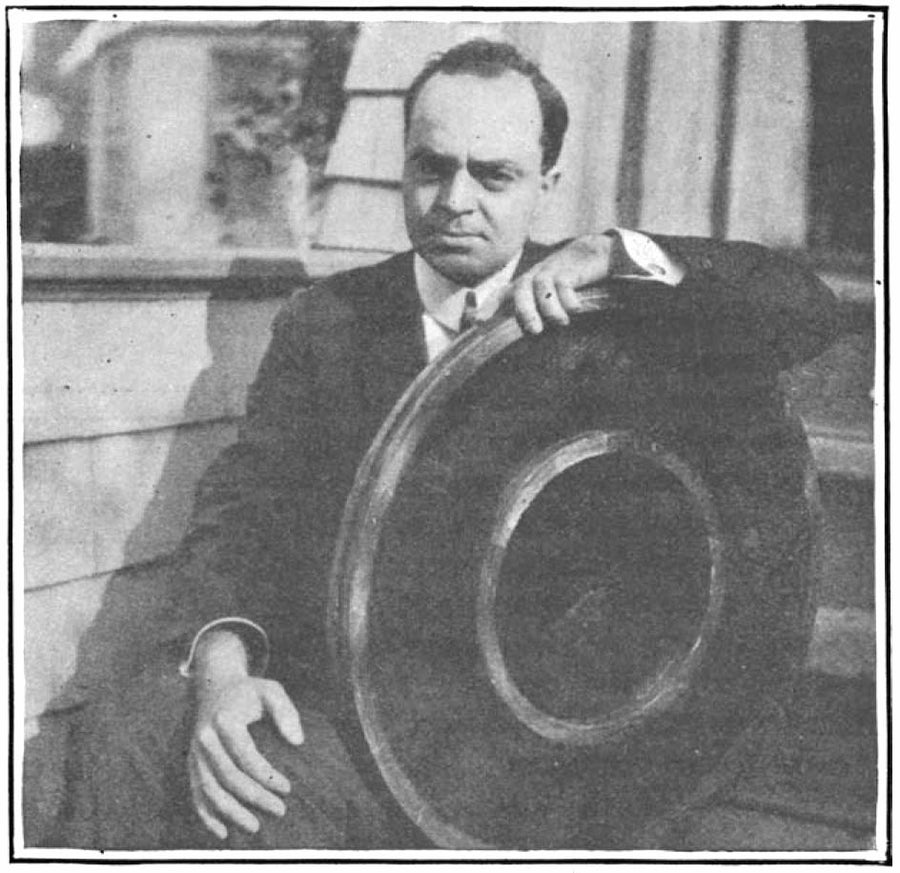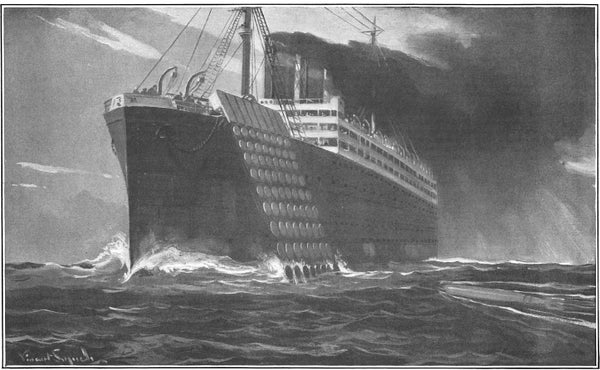This article was published in Scientific American’s former blog network and reflects the views of the author, not necessarily those of Scientific American
By the time the First World War erupted, progress in submarine and torpedo technology had created a weapon system that could blast a hole in the vulnerable unarmored hull of a merchant ship and send it to the bottom of the sea, with its crew, within seconds. By the end of October 1916 over three million tons of merchant shipping had been sunk by German and Austrian submarines. The risk to ships, whether from combatant or neutral nations, was real and ever present. Against this offensive capability an array of anti-submarine technologies and tactics were deployed. Some of these inventions were truly cringeworthy. Including this week’s idea from 100 years ago today.
In theory torpedoes could be seen racing toward the ship, at which point a sort of projector or gun could interpose a steel disk in its path:
“The submarine torpedo speeding on its errand of destruction is not an imperceptible missile .... It is admitted by torpedo experts that except in very rough water the white wake may be seen at a distance of 1,000 to 2,000 feet by carefully trained observers. At night, the wake may be detected by searchlight.”
On supporting science journalism
If you're enjoying this article, consider supporting our award-winning journalism by subscribing. By purchasing a subscription you are helping to ensure the future of impactful stories about the discoveries and ideas shaping our world today.

Inventor of an unsuccessful anti-torpedo shield with one of the heavy metal disks that was supposed to be deployed in front of a torpedo, 1916. Credit: Scientific American, November 4, 1916
“It has been proposed that shields or deflectors be placed in such a position as to explode the torpedo at a safe distance, say 20 feet from the vessel .... The disks are built up of steel with an air space between them so that they will almost but not quite float. This will prevent them from sinking too rapidly, and will maintain them in the desired position for the requisite length of time. The steel disks are two inches thick and 24 inches in diameter, weighing 30 to 150 pounds each. One of them may be seen in the accompanying photograph. They are projected from a gun by means of air pressure and are given rotation by an electrical mechanism.”
In practise it was difficult to spot a fast-moving torpedo in the wavy Atlantic in daylight. At night the task was almost impossible; spotlights could light up the water but would have acted as a beacon to every enemy submarine within 30 miles. Aiming and shooting this defensive device, to protect some part of the length of the hull, seems unduly cumbersome. Even if the “gunner” were accurate, timing the disks to arrive in front of a torpedo, whose direction and speed would have been hard to determine (especially under the stress of the moment), and then sink to the correct depth, in a way that would detonate the torpedo without being simply pushed aside, seems an impossible task, although I admit I have never tried it. In reality, submarines actually sank twice as many merchant ships with gunfire on the surface as they did by torpedoes fired without warning. Submarines also wreaked havoc by laying mines in well-travelled sea lanes. For such hazards, this defensive gizmo was utterly useless.
Even Scientific American distanced itself by proclaiming that “the publication of this article is not to be understood as an endorsement of the invention.” To be fair, the inventor, the ingenious and prolific John B. Flowers, did create many useful mechanical and electrical devices, including an early voice-activated typewriter. Although he was not a naval expert, he, as with many inventors at the time, earnestly desired to reduce the scale of death and destruction that is one of the hallmarks of the World War.
As the war progressed, anti-submarine tactics improved greatly. Merchant ships started carrying their own armament and engaged in gun battles with U-boats. Aircraft, destroyers and thousands of smaller boats of all sizes drafted for government service in the navy—trawlers, fishing smacks, luxury motor yachts, whalers—made it dangerous for U-boats to remain on the surface, forcing them to operate (less efficiently) underwater. Although in 1914 the submarine could lurk underwater in comparative safety, by 1916 depth-charge technology had advanced enough to start sinking subs while they were submerged. The convoy system with armed escort ships made it harder for submarines to pick off vulnerable stragglers without getting counter-attacked.
We’ll have a look at anti-submarine technology in greater depth in the coming year, as the Battle of the Atlantic intensified during 1917.
-
Our full archive of the war, called Scientific American Chronicles: World War I, has many articles from 1914–1918 on technological developments in the First World War. It is available for purchase at www.scientificamerican.com/products/world-war-i/
